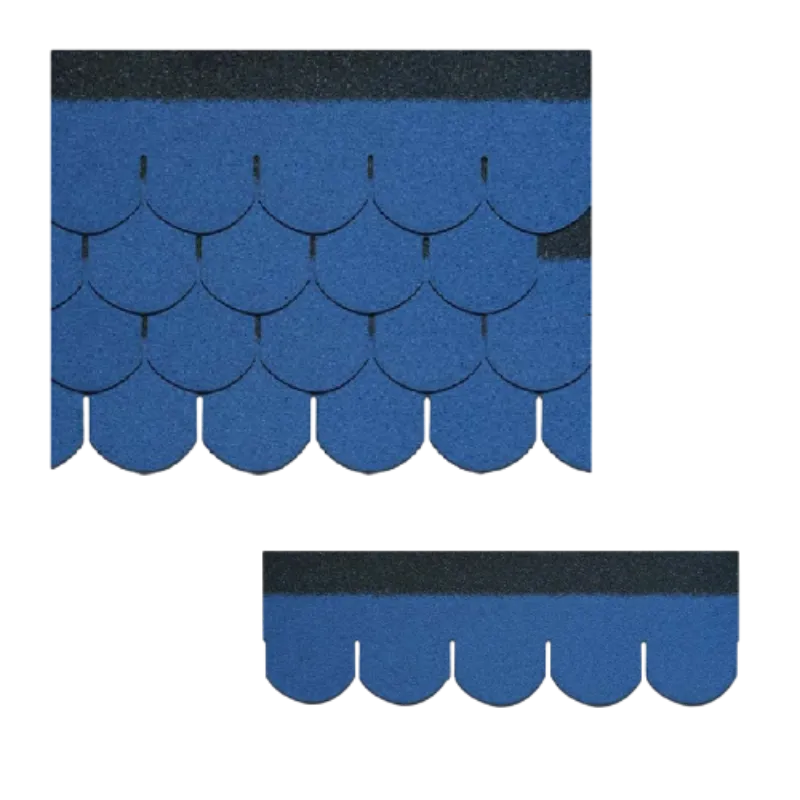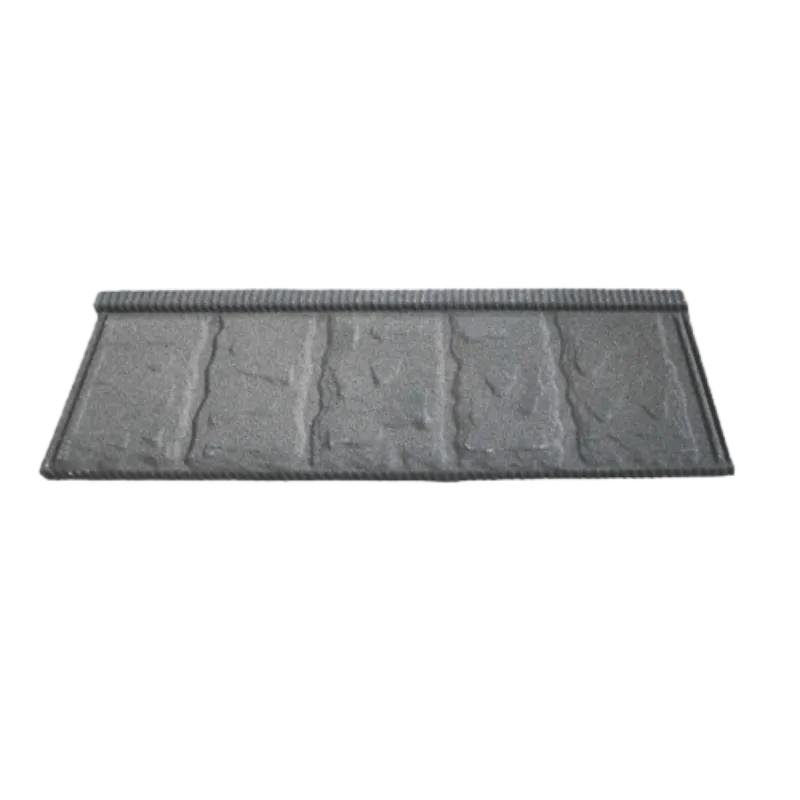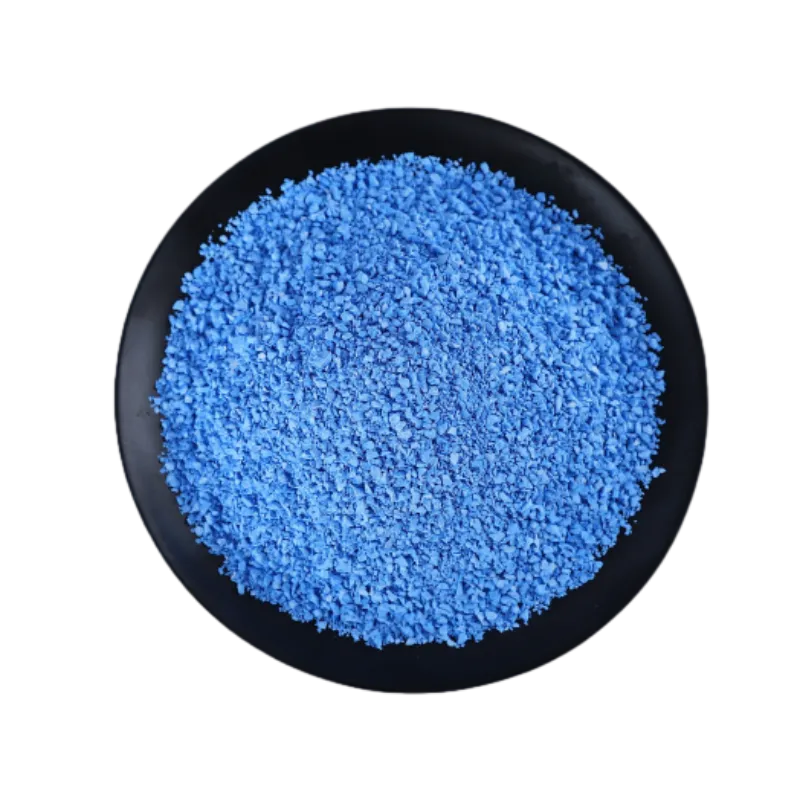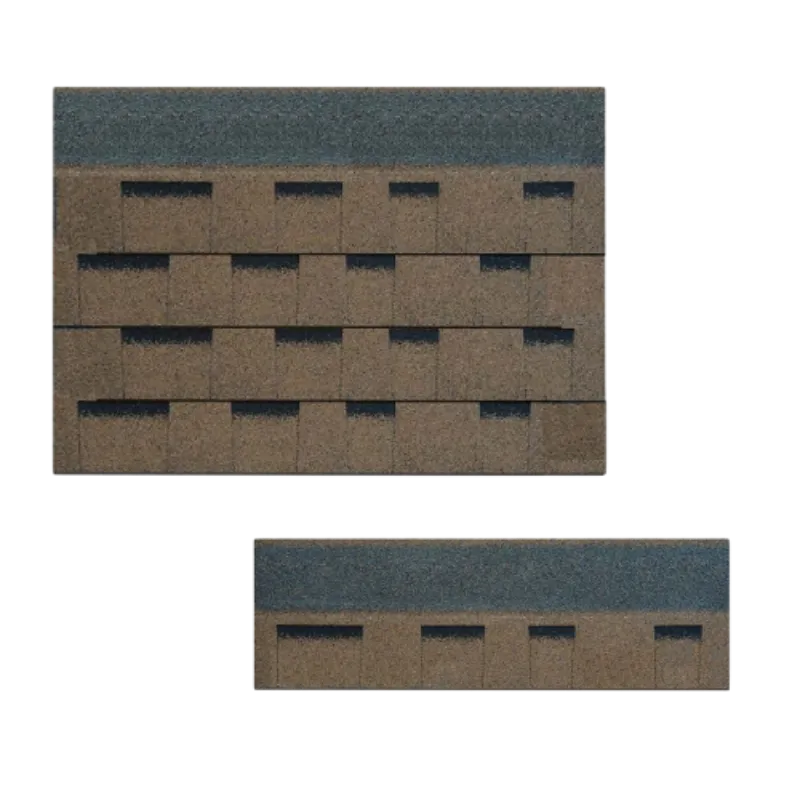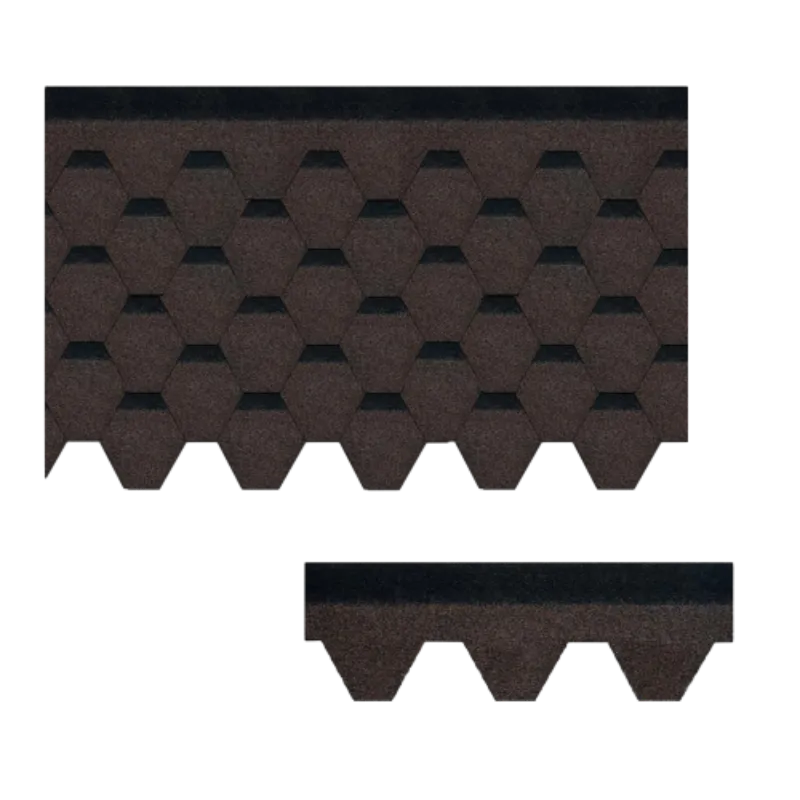
Nov . 19, 2025 18:00 Back to list
Terracotta Roof Shingles: Durable, Sustainable Roofing Solutions for Modern Needs
Why Terracotta Roof Shingles Matter Today
If you’ve ever admired a Mediterranean villa or wandered through the sunlit streets of Spanish towns, you probably noticed warm, earthy roofs crowning every house. Those are terracotta roof shingles—and they’re not just beautiful. Globally, terracotta shingles have a rich history yet keep adapting to modern needs, especially as durability, sustainability, and energy efficiency become near-universal demands in construction. Understanding terracotta shingles isn’t just about aesthetics; it’s about how traditional materials are stepping into 21st-century challenges. Globally, the roofing industry faces growing pressures: climate resilience, urban heat mitigation, and long-term cost savings. Using terracotta roofing can make a real difference in these domains, which explains why so many architects, builders, and even humanitarian groups swear by it. Mini takeaway: Terracotta roof shingles blend timeless beauty with practical benefits that respond to global environmental and social challenges.Terracotta Roof Shingles: A Quick Definition and Why They Matter
In simple terms, terracotta roof shingles are ceramic tiles made from natural clay, fired to harden and weatherproof them. Their reddish-orange hue isn’t just a color choice but a signature of the iron oxide in the clay reacting during kiln firing. These shingles have been part of human settlements for millennia — very early civilizations favored them for their availability and durability. Today, they’re not just decorative but functional components used worldwide, from upscale homes in California to low-cost shelters in seismic zones. Their natural insulation properties, resistance to heat, and longevity place them at the forefront of sustainable roofing solutions. Oddly enough, despite the growth of synthetic materials, terracotta shingles remain incredibly relevant, especially in regions hit by extreme weather or where renewable materials are prioritized. Terracotta roof shingles also fulfill modern humanitarian needs. NGOs often select them for rebuilding efforts because they withstand harsh climates and last decades with minimal maintenance. Mini takeaway: Terracotta shingles are naturally durable, eco-friendly roofing options that meet both aesthetic and practical demands globally.Core Components of Terracotta Roof Shingles
Let’s break down the qualities that make terracotta roof shingles stand out:Durability and Weather Resistance
Terracotta tiles resist fire, frost, and UV radiation remarkably well. Many manufacturers guarantee their products last 50 years or more. This reliability is why they remain popular, especially in hurricane-prone or wildfire-sensitive areas. While concrete and metal roofs compete, terracotta's natural resistance is tough to beat.Thermal Insulation & Energy Efficiency
Because of their clay composition and air pockets formed during installation, terracotta shingles provide excellent insulation. They reduce heating and cooling loads, which lowers energy consumption—a key factor as global energy costs shift and climate policies tighten.Aesthetic Flexibility
Though traditionally reddish, terracotta can be glazed or tinted in various colors. This versatility means architects aren’t limited stylistically. Rustic villas to urban townhouses find a place for these shingles.Eco-friendliness and Sustainability
Made from abundant natural clay, terracotta’s environmental footprint is considerably less than synthetic alternatives. Being 100% recyclable further enhances their green profile. Their production, however, still requires energy-intensive firing, pushing some vendors to innovate with cleaner kiln technologies.Cost-Effectiveness Over Time
Upfront costs might be higher than asphalt shingles, but terracotta’s longevity translates to fewer replacements and repairs. Over a typical roof lifespan, terracotta can be surprisingly affordable. Mini takeaway: From enduring climate extremes to saving energy and looking great doing it, terracotta roof shingles deliver on many fronts.Global Applications: Where Terracotta Roof Shingles Shine
Terracotta roofing finds homes on multiple continents and in varied sectors: - Mediterranean and Latin America: Naturally, these regions embody terracotta’s heritage, with local clay production and centuries-old manufacturing traditions. - Disaster Relief & Rebuilding: In Asia and parts of Africa, terracotta is becoming a preferred roofing material for rebuilding after floods or earthquakes because of its robustness and thermal comfort. - Sustainable Developments: Europe’s green building movement incorporates terracotta as part of energy-efficient retrofits. - Luxury & Heritage Projects: In the US and Australia, heritage home restorations demand authentic terracotta shingles to preserve cultural identity. One interesting case: after a 2018 cyclone in the Philippines, several NGOs prioritized terracotta tile roofing for permanent homes — citing durability and cultural acceptance as deciding factors. Mini takeaway: From disaster zones to eco-smart neighborhoods, terracotta shingles are versatile and globally relevant.Advantages That Make Terracotta Roof Shingles Popular
Let’s be frank: choosing roofing materials is an emotional and logical gamble. You want safety, style, sustainability, and savings. Terracotta hits those marks splendidly. - Cost Savings: Less energy spent on heating/cooling plus fewer repairs. - Sustainability: Natural clay, recyclable, and increasingly produced in cleaner ways. - Social Impact: Supports local manufacturing communities and heritage crafts. - Durability: Weather-resistant, fireproof, and long-lasting. - Aesthetic Confidence: Timeless appeal increases property value. When engineers tell me roofing problems are solved by going “back to basics” with earth materials, terracotta is often their example.Emerging Trends and Innovations in Terracotta Roofing
You might be surprised, but terracotta roof shingles aren’t stuck in the past. Today’s industry sees exciting innovations: - Glazed and Coated Terracotta: New coatings boost tile resistance to moss, algae, and water absorption. - Lightweight Variants: Innovative molding reduces tile weight without sacrificing strength, easing installation. - Smart Integration: Some R&D efforts combine terracotta tiles with photovoltaics, marrying tradition with solar tech. - Cleaner Production: Shifts to solar or electric kilns reduce carbon footprints in manufacturing hubs. - Digital Design Tools: Roofers use 3D measurements and software to seamlessly design terracotta installations for faster deployment. These push terracotta from “old school” to “future-proof” territory.Challenges and How to Overcome Them
No product is perfect: - Fragility on Impact: Terracotta shingles can be brittle during handling or storms with hail. - Weight Considerations: Heavy roof load might require structural reinforcement. - Installation Complexity: Skilled labor is essential; DIY can lead to issues. - Higher Initial Cost: More expensive than asphalt or metal upfront. Solutions? Improved packaging, modular prefabricated panels, installation training programs, and subsidy programs for climate-resilient materials.FAQ About Terracotta Roof Shingles
Q1: How long do terracotta roof shingles typically last?Most terracotta roof shingles last between 50 to 100 years with minimal maintenance, making them one of the longest-lasting roofing materials available. Proper installation and climate conditions also influence lifespan. Q2: Are terracotta shingles suitable for all climates?
Terracotta performs best in moderate to warm climates but can also be effective in colder regions if installed correctly. Their frost resistance means they’re less likely to crack in freezing conditions compared to alternatives. Q3: Can terracotta roof shingles help reduce household energy bills?
Yes! Due to their natural insulating properties and thermal mass, terracotta tiles help maintain stable indoor temperatures, reducing reliance on air conditioning and heating. Q4: Do terracotta shingles require specialized installation?
Absolutely. Installation requires skilled roofers familiar with tile roofing techniques to prevent damage and ensure waterproof sealing. DIY installation is generally not recommended. Q5: How environmentally friendly are terracotta roofing materials?
Terracotta is quite sustainable—composed of natural clay, recyclable, and produced with lower embodied energy compared to many synthetics. Advances in manufacturing continue to reduce their carbon footprint.
Terracotta Roof Shingles: Specifications at a Glance
| Specification | Typical Values |
|---|---|
| Material | Natural clay (terracotta) |
| Average Thickness | 10 - 14 mm |
| Weight per Tile | 2.5 - 4.5 lbs (1.1-2 kg) |
| Fire Resistance | Class A (Non-Combustible) |
| Lifespan | 50 - 100 years |
| Thermal Conductivity | 0.6 - 1.0 W/m·K |
Vendor Comparison: Popular Terracotta Roof Shingle Suppliers
| Vendor | Price Range | Product Warranty | Eco Features | Lead Time (Weeks) |
|---|---|---|---|---|
| Mediterraneo Tiles | $$$ | 50 years | Solar kiln fired; recyclable packaging | 6-8 |
| ClayCrest Roofs | $$ | 40 years | Locally sourced clay | 4-6 |
| Heritage TerraTiles | $$$$ | 60 years | Handcrafted; eco-friendly glazes | 8-10 |
Wrapping Up: The Enduring Appeal of Terracotta Roof Shingles
So, putting it all together—the charm, the function, and the evolving technology—terracotta roof shingles feel like a reassuring bit of continuity in a world that’s always changing. Whether a homeowner in Florida battling hurricanes or an NGO rebuilding homes in Southeast Asia, these humble clay tiles provide durability, sustainability, and a connection to place that few synthetic roofs can match. They’re not the cheapest option at the outset, but their long-term value, combined with improving eco-friendly manufacturing techniques, suggests a bright future for terracotta tiles. If you’re curious to see products firsthand or explore options, visit terracotta roof shingles and see what suits your project or climate zone. Mini takeaway: Terracotta roof shingles remain a timeless, effective roofing solution—poised beautifully between heritage and innovation.References
Latest news
-
Red Clay Roof Tiles: Durable, Sustainable & Stylish Roofing Solutions
NewsNov.23,2025
-
Durable and Sustainable Ceramic Roofs: A Global Perspective on Design & Innovation
NewsNov.23,2025
-
Synthetic Clay Tile Roof – Durable, Eco-Friendly Roofing Solutions for Modern Buildings
NewsNov.22,2025
-
Expert Guide to Terracotta Tile Roof Restoration - Sustainable Preservation & Repair
NewsNov.21,2025
-
Planum Roof Tiles – Durable, Sustainable Flat Roofing Solutions for Global Needs
NewsNov.20,2025
Related Products
Copyright © 2025 Hebei Chida Manufacture and Trade Co., Ltd. All Rights Reserved. Sitemap | Privacy Policy


